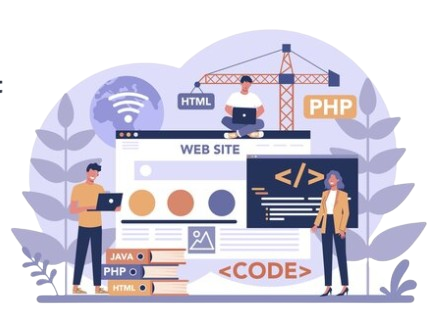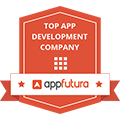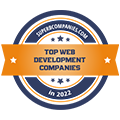AI-driven personalization is undeniably one of the most exciting Web Development Trends to watch in 2025 and beyond. From chatbots to predictive analytics, dynamic content adaptation to AI-powered web design, the possibilities for creating personalized, engaging websites are limitless.
The world of web development is rapidly evolving, and one of the most exciting areas of innovation is integrating artificial intelligence (AI) into creating personalized user experiences. Web developers continuously strive to keep up with the latest Web Development Trends, and AI has quickly become an essential tool in delivering dynamic, engaging, and tailored websites that resonate with users. In this blog post, we’ll explore how AI is reshaping web development and how it can be leveraged to create personalized websites that stand out in an increasingly competitive online landscape.
Understanding the Shift in Web Development Trends
The shift toward personalization in web development is no longer a novelty but a necessity. Users expect more from their online experiences, and personalization is at the heart of these expectations. From content recommendations to personalized layouts, AI technologies help developers create websites that adapt in real-time to user behavior.
AI-powered personalized websites offer visitors customized content, product suggestions, and unique layouts based on their interactions and data. This approach is transforming how businesses engage with customers, increasing user satisfaction, and driving higher conversion rates. But to understand how this works, we need to take a deeper look at the emerging Web Development Trends centered around AI.

AI-Driven Personalization
Personalization through AI involves collecting and analyzing user data to make website interactions more relevant and engaging. AI systems can analyze user behaviors like browsing history, search patterns, location, and time of day to create a dynamic, customized web experience. The key is predicting user needs and adapting the website to offer a seamless, intuitive experience.
For instance, AI can suggest content based on past interactions. A visitor reading web design blogs might see more content on design trends or tutorials. On an e-commerce site, AI could recommend products based on past purchases or searches, making the site feel more personalized. By leveraging AI, developers can cater to individual preferences, creating a tailored experience for each visitor.
Chatbots and Virtual Assistants
Another important aspect of Web Development Trends in AI involves the use of chatbots and virtual assistants. These tools have been around for a while but are becoming increasingly sophisticated thanks to AI advancements. Today’s chatbots offer personalized support, learning from each interaction to provide more relevant responses over time.
For example, a virtual assistant on an e-commerce site guides users through purchases, answers questions, and suggests items. AI chatbots also provide 24/7 customer service, answering frequently asked questions in real-time.
These AI assistants improve user experience by making interactions faster and more intuitive while reducing the need for human intervention. As part of Web Development Trends, chatbots are now an essential tool for businesses seeking deeper customer engagement.
Dynamic Content Adaptation
One of the most powerful applications of AI in web development is dynamic content adaptation. This feature allows websites to modify their content based on various factors such as the user’s location, device, browsing history, or even the time of day. This leads to a much more customized experience that feels more in tune with the user’s needs.
For example, a travel website may display different destinations based on the user’s location, or a news site could highlight stories relevant to their interests. An online clothing store might adjust product recommendations based on the weather or past purchases. Dynamic content is one of the most exciting Web Development Trends, enabling businesses to deliver highly personalized experiences without requiring extra effort from users.
Predictive Analytics
Predictive analytics is another AI-driven technology that is gaining traction within the realm of web development. This involves using data and machine learning algorithms to predict what users are likely to do next. Predictive analytics helps websites anticipate user behavior and display content or offers that are likely to engage them.
For example, an online store can predict that a customer browsing a product category might like related promotions. A content-driven site may use predictive analytics to suggest articles based on a visitor’s past reading habits, keeping them engaged.
Incorporating predictive analytics in web development allows businesses to create a proactive, personalized experience that improves retention and boosts conversions.
AI-Powered Web Design
AI is enhancing web design with tools that help create layouts, select color schemes, and optimize interfaces. AI-powered tools analyze millions of web pages to identify effective design elements and suggest them for specific websites.
Some AI tools use machine learning to assess user interactions and recommend design changes to improve the experience. For example, AI analyzes heatmaps of user clicks and adjusts the layout, ensuring key elements are optimally placed.
These tools are revolutionizing web development, enabling developers to create user-friendly, visually appealing websites that cater to individual preferences
Security and Data Privacy
As personalization becomes more prevalent in web development, the need for secure data handling has never been greater. AI plays a critical role in enhancing website security by identifying potential threats as they occur in real-time. It can flag suspicious activities like fraudulent transactions or data breaches, ensuring that potential risks are caught early. Through machine learning algorithms, AI can detect unusual patterns of behavior, such as sudden spikes in traffic or abnormal user actions. Once these patterns are identified, the system can instantly alert developers to take swift action, mitigating the impact of any security breaches.
In addition, as personalization on websites often requires the collection of large amounts of user data, AI also ensures compliance with essential data privacy regulations. For instance, it can help websites adhere to strict laws like GDPR. AI-driven systems offer smarter ways to manage and protect user data, making sure it is collected securely. This ensures that personal information is stored in line with privacy laws, providing peace of mind to both users and businesses alike.
Conclusion
AI-driven personalization is undeniably one of the most exciting Web Development Trends to watch in 2025 and beyond. From chatbots to predictive analytics, dynamic content adaptation to AI-powered web design, creating personalized, engaging websites is limitless. As businesses embrace AI, they can offer customized experiences that enhance user engagement, satisfaction, and ultimately drive conversion rates and loyalty.
Looking ahead, developers who stay on top of these Web Development Trends will be well-positioned to lead in creating next-gen websites. The combination of AI and web development will continue to shape how we interact with websites in the future.
For businesses and developers looking to harness the power of AI in web development, partnering with experienced agencies like Tanbits can provide valuable insight and expertise to make the most of these advancements.
BACK










